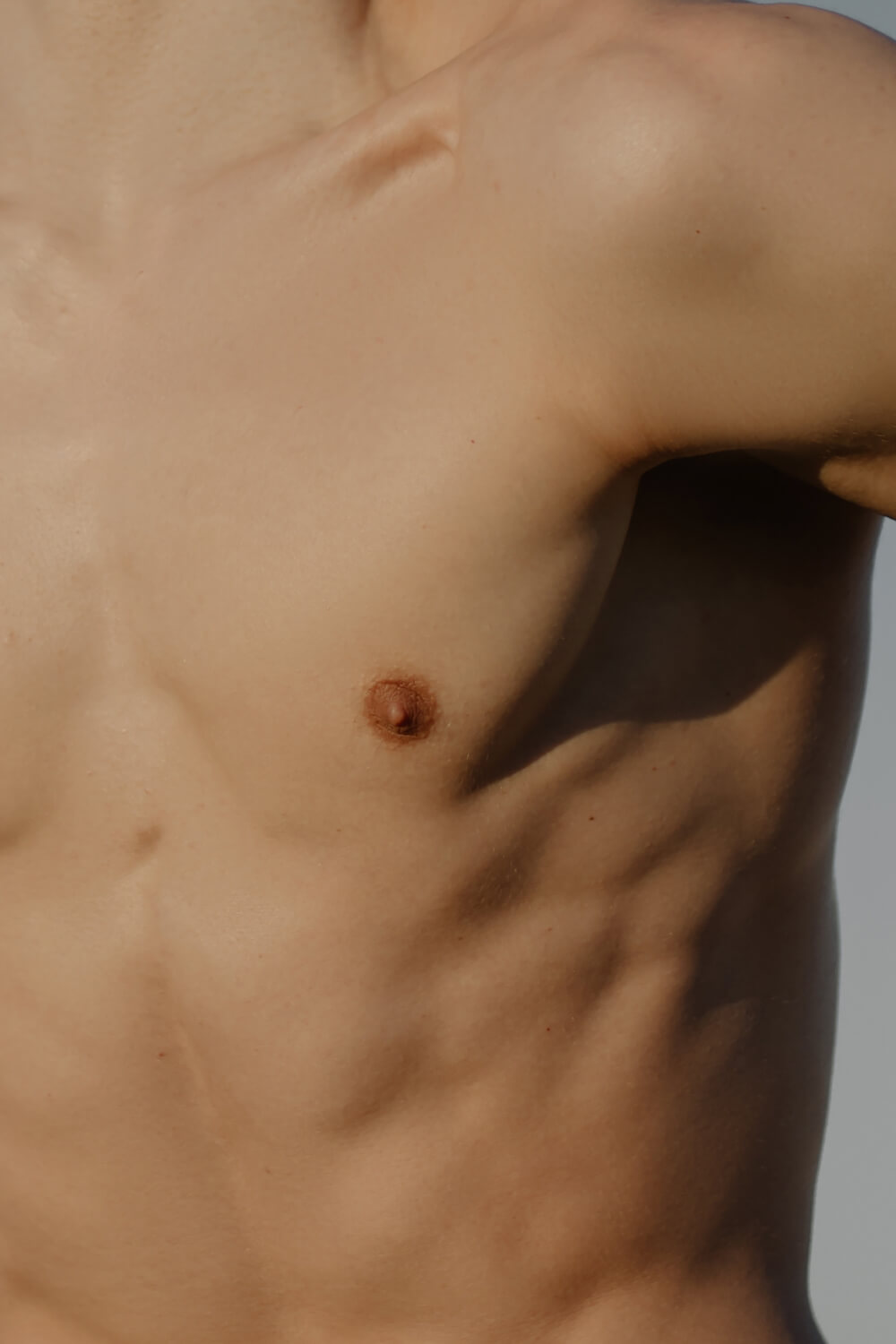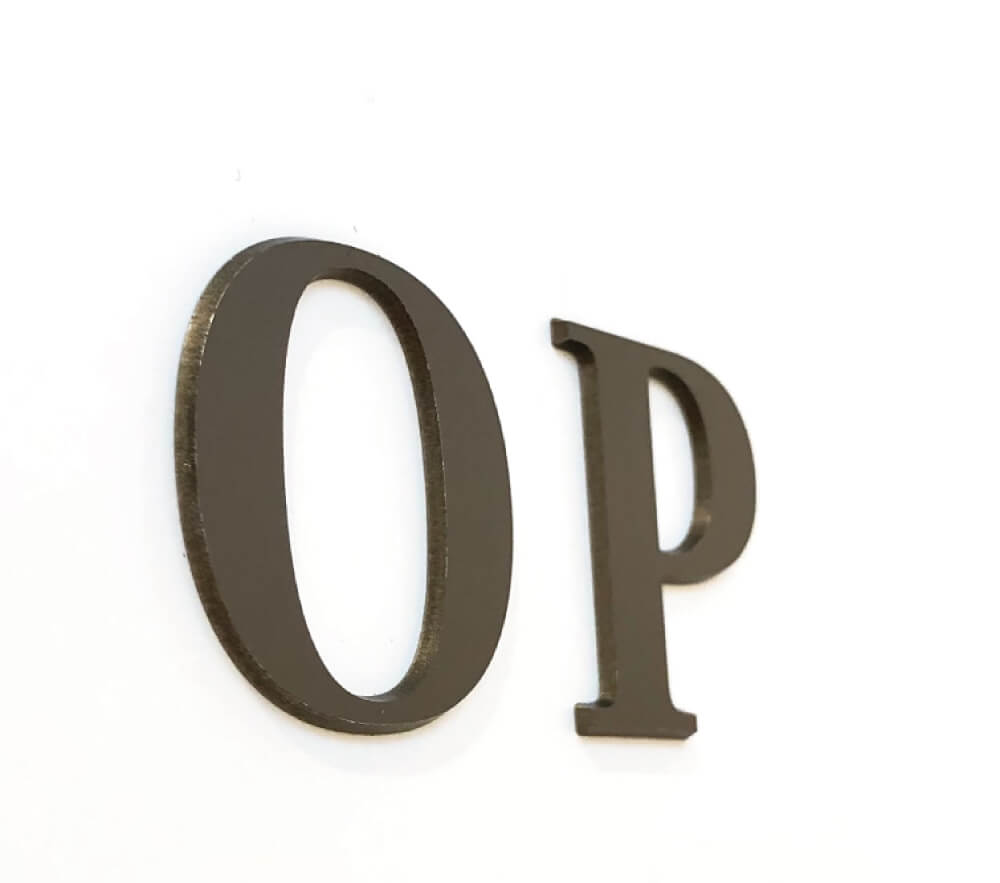Gynecomastia - the unpopular boobs

In brief
Gynecomastia is an enlargement of the breast tissue that occurs in men. It can affect self-esteem and psychological well-being, as it can lead to a feminine appearance. A hormonal imbalance during puberty, hormonal disorders, side effects of medication or certain diseases can trigger the growth.
Symptoms of gynecomastia may include breast swelling, breast tenderness or pain. In persistent or severe cases, surgery may be required to remove the excess breast tissue and restore the aesthetic appearance. This surgery can be purely related to the removal of the mammary gland or combined with “body contouring” through liposuction.
What motivates people to undergo treatment for gynecomastia?
For many men, the female appearance caused by developed gynecomastia is an enormous burden. It is not uncommon for those affected to experience significant stigmatization as early as adolescence. In extreme cases, the “male breast” is visible despite clothing and can lead to introverted behavior both privately and professionally.
It is often reported that even in long-term relationships this can be a burden.
What is gynecomastia?
This is an excessive, usually benign, growth of the mammary gland in men. Gynecomastia is a change in the male breast, often caused by hormonal disorders. This condition affects men of all age groups and, in rare cases, can also be caused by medication or occur as a secondary disease as part of an organ disease. It occurs symmetrically and can simulate a very feminine appearance. This condition is often described by those affected as extremely unpleasant and “unmanly”. It is not uncommon for men of all ages to be approached and discriminated against. Social withdrawal or depression are not uncommon. The proportion is significantly higher in adolescence. This is a physiological form that usually goes away on its own. Especially 13-16 year olds can suffer enormously from stigmatization in this phase.

What different methods are there?
The aim of surgery for confirmed gynecomastia is to remove the breast tissue. This is often done through a small incision on the lower edge of the areola. If there is some fatty tissue in addition to the gynecomastia, liposuction is considered. This ensures an even result. Bodytite can be used as an additional method. This involves radiofrequency which tightens the surrounding tissue if it is sagging. As gynecomastia is often a mixed form, these methods are often combined.
What type of anesthesia is required?
You will be sedated during the operation. This means that you will be in a kind of twilight sleep. A pleasant state in which you will not feel anything of the operation. General anesthesia is not usually necessary. The difference between anesthesia and sedation is, in addition to different medications, that artificial respiration is not used. During sedation, you breathe on your own. Patients perceive this as less stressful.
Can the procedure be combined with other procedures?
The removal of mammary gland tissue as part of a gynecomastia can be combined with many other procedures. Men with excess skin or loose connective tissue often opt for an additional tightening of the removed area. Small autologous fat transplants to fill volume defects on the face or lips are also very popular.
Surgical and conservative alternatives
There are various conservative and surgical alternatives for many operations. It is therefore necessary to consider these carefully before any surgical intervention. If the use of a scalpel can be dispensed with due to conservative alternatives, these are of course preferable.
In the case of gynecomastia, however, no promising conservative treatment methods have proven successful.

Specific features of gynecomastia
The classification of gynecomastia according to Tanner and Hall has become internationally accepted.
The Tanner classification describes the classification of physical development during puberty.
Five stages are distinguished here:
- No palpable glandular body
- Areola enlarged, gland bulging
- Glandular body larger than areola
- Solid glandular body
- Corresponds to female breast
The Hall classification (from 1959) describes the severity of gynecomastia.
Three degrees of severity are distinguished:
- Grade I: Clinically only palpable enlargement of the glandular body
- Grade II: Enlargement already detectable by inspection
- Grade III: Corresponds to female breasts


Whether this operation is performed on an outpatient or inpatient basis?
We perform the removal of mammary gland tissue on an outpatient basis in our surgery. A total of 3-4 hours should be planned. Even if the actual operation time is 1.5-2 hours, the time for preparation and follow-up must be taken into account. For example, the sleeping pills need to be taken. You are welcome to stay in our surgery until you feel fit again. Immediately after waking up, you may experience slight circulatory weakness. Active participation in road traffic should be avoided at all costs within the first 12 hours.
Risks and complications
In this surgical procedure, breast gland tissue is treated via a skin incision in combination with liposuction. Despite all caution, complications of varying severity can occur. It is important that you are sufficiently informed about all possible risks and complications before a planned operation. During the initial consultation, we will go through a corresponding information sheet with you.
Minor complications
Common side effects are minimal pain, comparable to moderate muscle soreness, as well as swelling and hematomas on the upper body. Other possible complications in the suctioned areas may include dents and irregularities. As a preventative measure, care is taken during the operation to ensure that the areas are evenly tightened. Nevertheless, minimal irregularities may remain. To minimize the risk of irregularities in the suctioned areas after the operation, we recommend wearing compression garments and lipomassages by your physiotherapist.
Rare, major complications
The risk of secondary bleeding is slightly increased within the first 24 hours after the procedure. During this time, you will receive a special compression bandage in addition to the drains to minimize the risk. When removing the mammary gland tissue, radical removal is necessary to avoid possible recurrences. In this case, the dissection is continued directly under the skin. Particularly in the sensitive area of the mammary gland, sesibility disorders or reduced blood flow can occur in rare cases. This only affects the entire nipple in exceptional cases, but can lead to depigmentation (discoloration or fading).
What to do in the event of complications?
If, contrary to expectations, complications arise, we will not leave you to deal with them alone. After the operation, you will be given an emergency number where you can reach us 24 hours a day. During the routine check-ups following the operation, we will discuss the progress and further procedure with you in detail.
Healing and progress
As soon as patients have decided to have surgery, there is great anticipation of the result. However, depending on the procedure, there is a long way to go. You will need to be patient until the final result is achieved. If you know what to expect before your planned operation, this path will be easier.
How long does it take to heal?
The larger the initial finding, the clearer the result will be within the first few days after the operation. As we always combine the removal of the glandular body with liposuction, swelling of the liposuctioned area is often to be expected. To counteract this swelling, we recommend wearing compression garments for 4-6 weeks.
Is the treatment painful
The operation itself is painless due to the sedation. Immediately after the procedure, the painkillers continue to have a slight effect, so that moderate pain may be felt in the suctioned areas after a few hours.
Swelling can also cause a feeling of tightness for the first 2-3 days. We counteract this as best as possible by putting your compression garment on immediately after the operation. Unfortunately, a slightly immobilizing feeling cannot always be avoided. The inserted drains may cause a slight pulling sensation within the first 24 hours, which disappears when the drains are removed.

When can the final result be expected?
It takes an average of 3-6 months for the swelling to disappear completely. The scars may be slightly reddened temporarily.
It is recommended that you perform independent massages. We will instruct you accordingly.
What patients should plan to do?
A surgical procedure requires a certain amount of planning and organization not only for the surgical team, but also for the patient, both before and after the operation. It is important that you are well prepared and know what to expect. This allows you to concentrate fully on enjoying the results.
One of the most important questions before any surgical procedure is the “why”. You should be clear about why you want to have surgery at all. Once you have answered this question and made a decision, the following questions should definitely be clarified: How? By whom? When?
I will be delighted if you find your way to my surgery and would like to be operated on by me. However, I also recommend all my patients to get a second opinion. You should be absolutely sure about the date and surgeon.
Plan the time before your operation
We recommend comprehensive diagnostics before every breast operation. This includes an endocrinological examination as well as an ultrasound scan. Surgical removal only makes sense if there is a confirmed suspicion of gynecomastia. If it is merely an accumulation of fatty tissue, liposuction alone is sufficient.
Once you have decided to have the operation after a detailed consultation and anamnesis, you should plan the time after the operation accordingly with those around you. Although you should not expect to be out of action for any length of time, you may occasionally experience temporary restrictions in movement.
Plan the time after your operation
Patients are socially acceptable 2-3 days after the operation. However, we recommend that you take it easy physically for approx. 14 days until the wound has healed. We also recommend wearing compression garments for 4-6 weeks to counteract swelling.
The stitches can be removed after 10-12 days. Light sporting activities are then possible again. If skin tightening has also taken place as part of the operation, we recommend wearing special silicone ointments or plasters and strictly avoiding direct sunlight for optimal wound healing.
Patients generally describe the pain after the operation as moderate muscle soreness.
How much does surgery cost?
The cost of this operation is around 3000-5000, depending on the extent of the procedure. Combination procedures with additional body shaping by tightening or body contouring as well as fat grafting can increase the duration of the operation and thus also the costs.

Financing, down payment, installment payment
We also offer the option of financing and installment payments. We will be happy to inform you about this in a personal consultation. If you decide on an operation date after our consultation, we will agree a deposit of €500 to fix the date accordingly. You can pay the remaining amount on the day of the operation or in advance.
